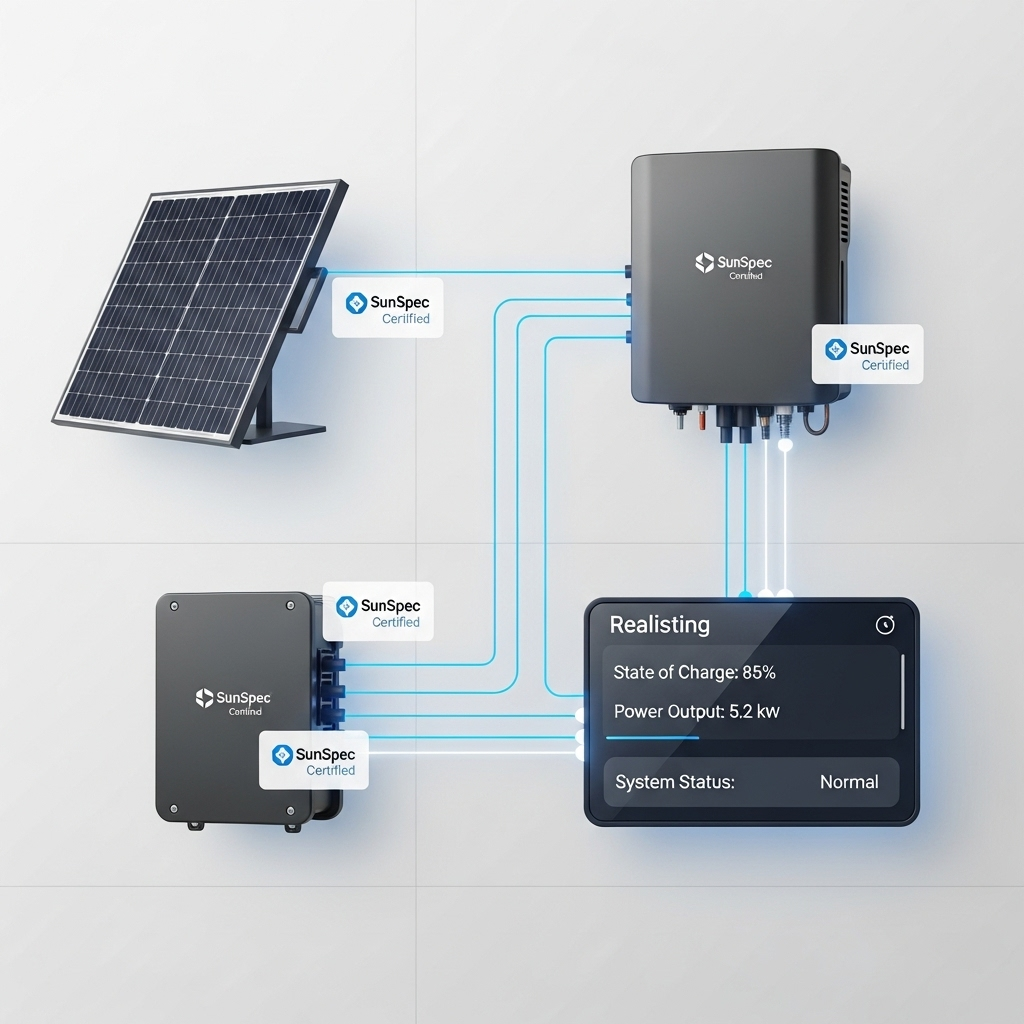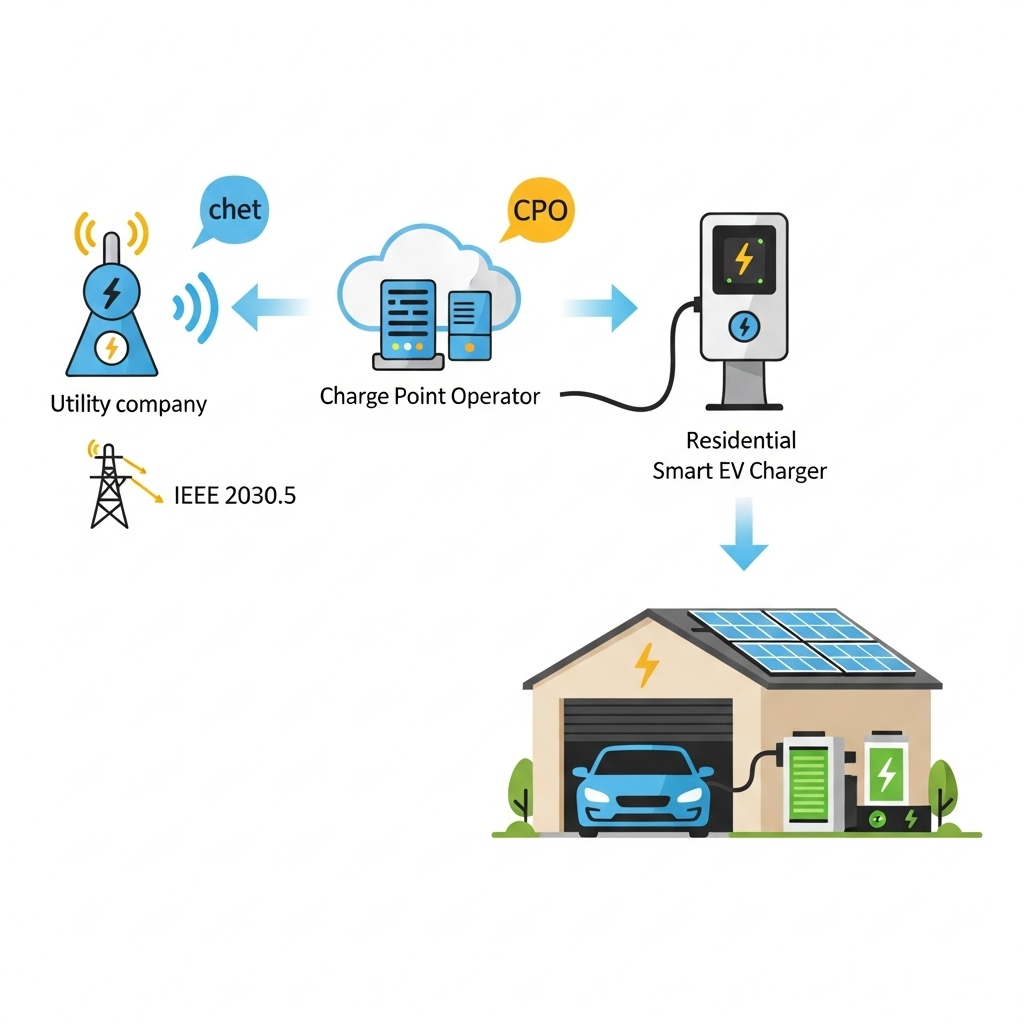The success of a solar energy storage system (ESS) depends on more than just high-quality panels and batteries. For project developers and financiers, the most critical quality is 'bankability'—the assurance that a project is a low-risk, profitable investment. A key, often overlooked, element that underpins this confidence is the communication protocol used within the system. This guide explains how SunSpec Modbus serves as a foundational technology for creating bankable solar ESS projects.
What Makes a Solar ESS 'Bankable'?
Bankability is the measure of a project's attractiveness to financial institutions. A bankable project promises predictable returns, minimal risks, and reliable long-term operation. Investors scrutinize every detail to forecast performance and profitability. When they see standardized, transparent components, their confidence grows, and securing financing becomes much easier.
Key Factors Influencing Bankability
Several core factors determine whether an ESS project is considered a sound investment:
- Performance and Reliability: The system must consistently deliver the expected energy output. Any downtime or underperformance directly impacts revenue and return on investment.
- Operational & Maintenance (O&M) Costs: High O&M costs can erode profits. Systems that are easy to monitor, diagnose, and service are financially more attractive over their lifespan.
- Interoperability and Scalability: A project should not be locked into a single manufacturer's ecosystem. The ability to integrate components from various vendors and easily scale the system is crucial for long-term flexibility and cost management.
- Data Transparency: Lenders and asset managers require clear, standardized, and verifiable data to track performance against financial models. Without this, risk assessment is nearly impossible.
Introducing SunSpec Modbus: The Standard for Solar Communication
Modbus is a widely adopted, robust communication protocol that has been a workhorse in industrial automation for decades. It is simple, reliable, and effective. However, on its own, Modbus does not define what the data means. One device might report battery voltage on a specific register, while another uses the same register for temperature.
This is where the SunSpec Alliance comes in. The Alliance developed a standardized 'language' or set of data models that run on top of the Modbus protocol. These models define common data points and configurations for solar and storage devices like inverters, batteries, and meters.
How SunSpec Standardizes Data
SunSpec creates specific information models for different device types. For example, there is a model for inverters, one for lithium-ion batteries, and another for environmental sensors. Each model specifies exactly what information is available and where to find it. This creates a 'plug-and-play' environment. When you connect a SunSpec-compliant inverter to a SunSpec-compliant data logger, they understand each other instantly without custom programming. This standardization is a key enabler for streamlining projects, a point reinforced by the U.S. Department of Energy's efforts to resolve system integration issues, as mentioned in its Success Story on Improving Interconnection.
The Advantage of an Open Standard
Using an open standard like SunSpec Modbus frees you from vendor lock-in. Proprietary protocols force you to use a single brand for all major components, limiting your options and exposing you to supply chain risks. With SunSpec, you can select the best-in-class components from a wide ecosystem of manufacturers, confident that they will communicate seamlessly. This flexibility is a significant factor in de-risking a project from a financial perspective.
The Direct Link: How SunSpec Modbus Boosts Bankability
The choice to use SunSpec Modbus is not merely a technical decision; it is a financial one. It directly addresses the core requirements of a bankable project by enhancing reliability and transparency.
Reducing Project Risk and Commissioning Time
Standardized communication dramatically reduces the time and complexity of system commissioning. Instead of engineers spending days or weeks writing custom code to integrate mismatched components, SunSpec-compliant devices can be configured in a fraction of the time. This reduction in labor and potential for error lowers upfront project costs and accelerates the timeline to revenue generation. As the IEA's Solar Energy Perspectives report notes, mechanisms that help projects achieve financial closure are critical, and faster, more reliable commissioning is a direct contributor.
Enhancing Performance Monitoring and Asset Management
For investors, data is currency. SunSpec ensures that all stakeholders receive consistent, reliable performance data. Accurate performance data is non-negotiable for bankability. As detailed in the ultimate reference for solar storage performance, key metrics like Round-Trip Efficiency (RTE) and State of Health (SOH) must be tracked precisely. SunSpec Modbus ensures this data is uniform and accessible, providing the transparency needed for performance guarantees, financial reporting, and asset management.
Lowering Lifetime Operational Costs
The benefits of standardization extend throughout the project's life. With standardized fault codes and data points, remote troubleshooting becomes faster and more accurate. Technicians can quickly identify issues without needing specialized knowledge of a particular brand's proprietary system. Furthermore, if a component needs replacement years later, you can source a new SunSpec-compliant part from any number of vendors, ensuring competitive pricing and long-term serviceability. This aligns with the broader goal of making renewable energy more cost-competitive, a theme explored in the IEA's Medium-Term Renewable Energy Market Report 2016.
Comparing Communication Approaches for ESS Bankability
The choice between a proprietary system and one based on an open standard like SunSpec Modbus has clear implications for a project's financial health. The table below illustrates the differences across key bankability factors.
| Feature | Proprietary Protocol System | SunSpec Modbus System |
|---|---|---|
| Component Interoperability | Low; locked into a single vendor's ecosystem. | High; supports multi-vendor components. |
| Data Transparency | Opaque; data points are inconsistent and may require special software. | High; standardized data models provide clear, consistent information. |
| Commissioning Time & Cost | High; requires custom integration and manual configuration. | Low; enables 'plug-and-play' setup, reducing labor costs. |
| Long-Term O&M | High; dependent on a single vendor for support and parts. | Low; simplified troubleshooting and competitive component replacement. |
| Scalability | Limited and often expensive. | Flexible and cost-effective. |
| Investor Risk | High; due to vendor lock-in and lack of transparency. | Low; due to flexibility, transparency, and a large support ecosystem. |
Disclaimer: This article provides general information and does not constitute financial or investment advice. Always consult with a qualified professional before making investment decisions.
A Strategic Choice for Future-Proof Systems
Adopting SunSpec Modbus is more than a best practice for system integration; it is a strategic decision that directly enhances the financial viability of a solar ESS. It provides the reliability, interoperability, and data transparency that investors demand. By choosing components that adhere to this open standard, developers de-risk their projects, lower lifetime costs, and build systems that are both technologically sound and financially attractive.
Ultimately, a standardized communication backbone makes a solar and storage asset more predictable, manageable, and profitable. In the world of project finance, that is the definition of bankable.
Frequently Asked Questions
Is SunSpec Modbus a separate protocol from Modbus?
No. SunSpec is not a new protocol. It is a set of standardized data models that run on top of the existing Modbus protocol. Think of Modbus as the postal service and SunSpec as the standardized address format that ensures the mail gets to the right place and is understood by the recipient.
Do all solar inverters and batteries support SunSpec?
Not all, but a large and growing number of manufacturers support SunSpec standards. When selecting components for a bankable project, looking for the 'SunSpec Certified' mark is a critical step in ensuring interoperability and data transparency.
How does SunSpec help with grid integration?
SunSpec provides standardized models for advanced inverter functions required by grid operators, such as power factor control, voltage regulation, and frequency response. This common framework makes it easier for utilities to communicate with and manage distributed energy resources (DERs), facilitating smoother grid integration and compliance with standards like IEEE 1547.
Can I add SunSpec compatibility to a non-compliant device?
In some cases, it is possible to use a third-party gateway or protocol converter. This device sits between the non-compliant component and the rest of the system, translating the proprietary data into the SunSpec standard format. While this can be a solution for legacy systems, selecting natively compliant devices from the start is more efficient and reliable.





Leave a comment
All comments are moderated before being published.
This site is protected by hCaptcha and the hCaptcha Privacy Policy and Terms of Service apply.